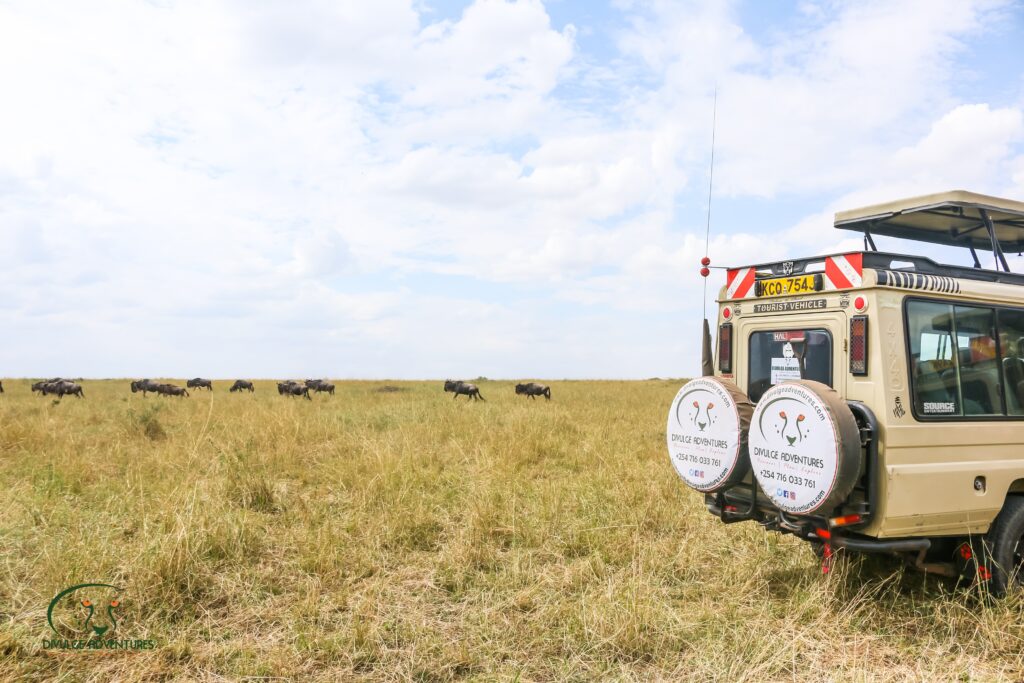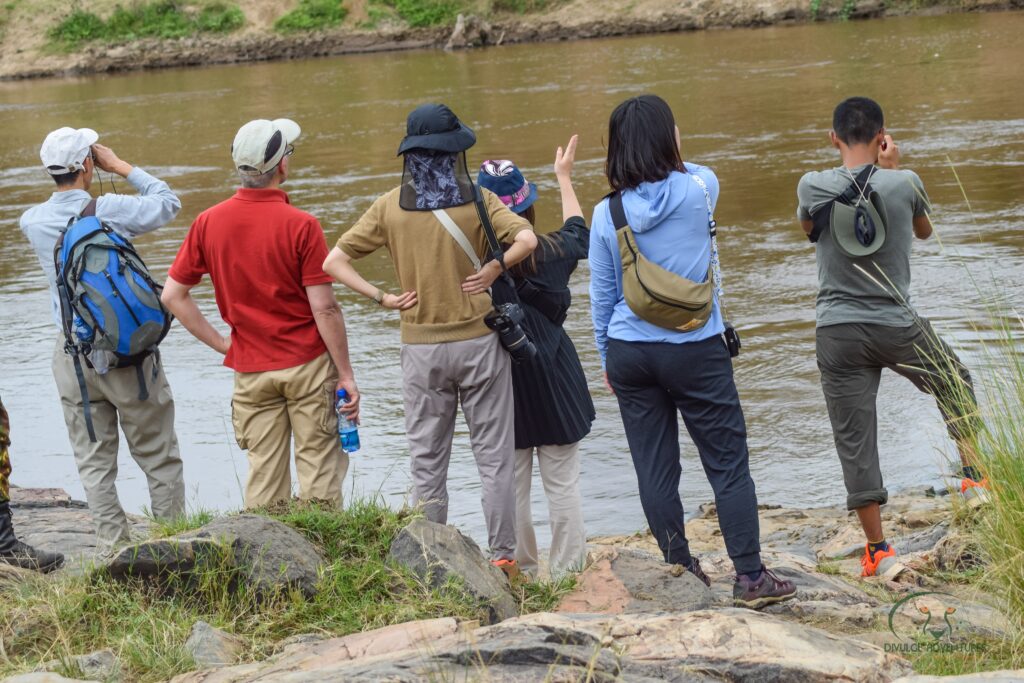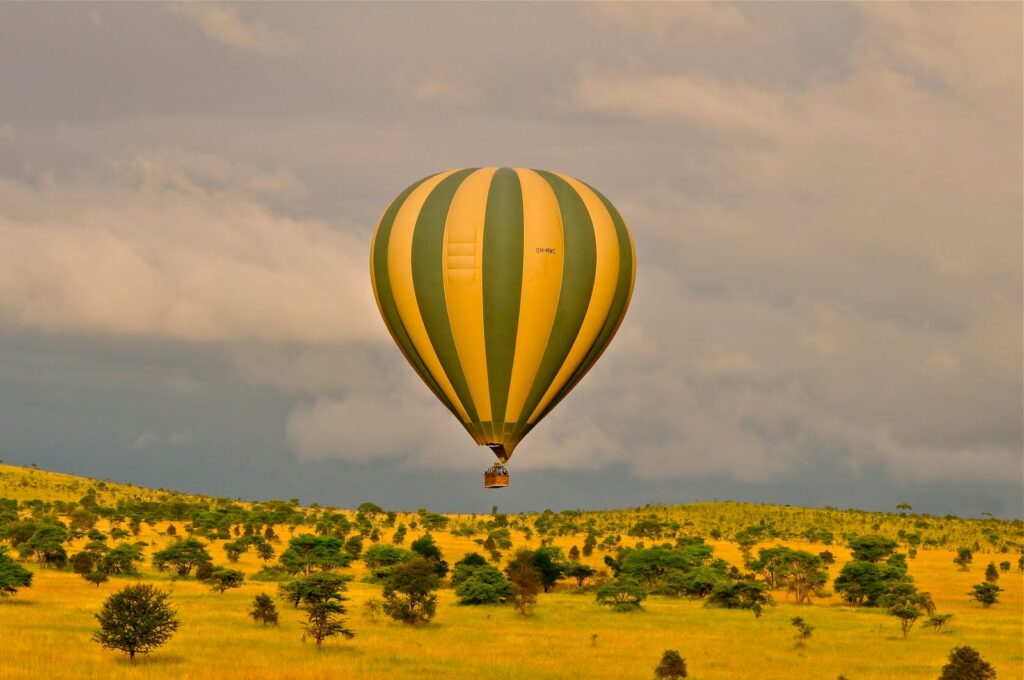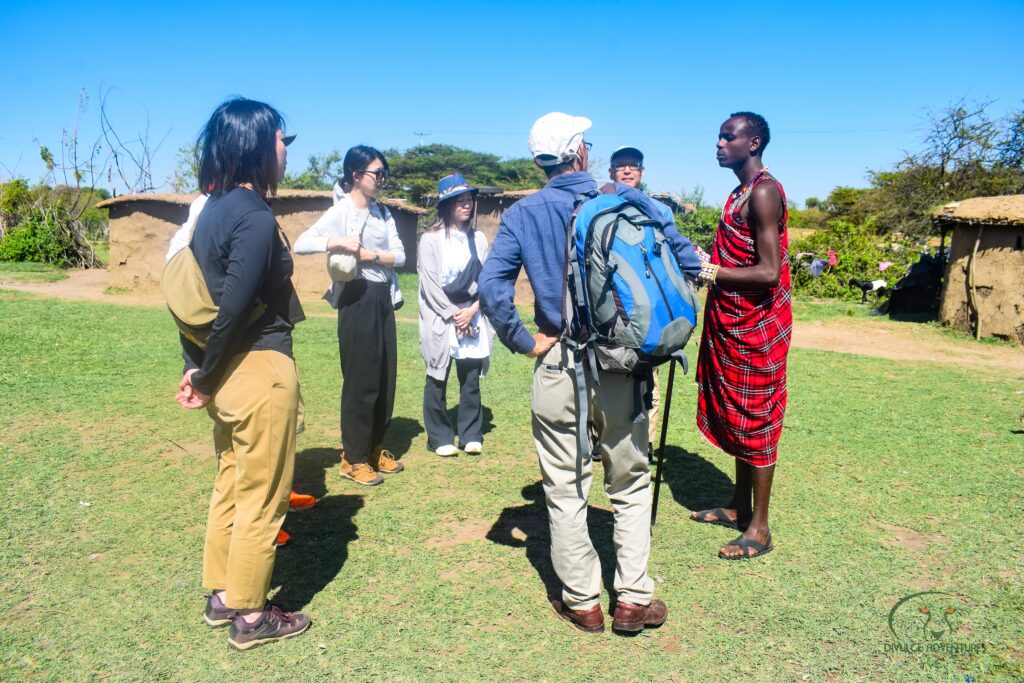Things to do in Masai Mara National Reserve Kenya
Masai Mara National Reserve’s attractions make it Africa’s most visited. Masai Mara National Reserve borders Tanzania in southwest Kenya. The reserve is 1510 square kilometers. In addition, together with Tanzania’s Serengeti National Park, they’re the world’s top wildlife viewing spot. Masai Mara National Reserve has 95 species of mammals and 570 avian species. Over 1.5 million wildebeest, zebras, and Thompson’s gazelle migrate across the Masai Mara from June to November. The animals follow the rains from Tanzania’s Serengeti National Park to the Masai Mara National Reserve and back, traversing 1,800 miles. This movement attracts thousands of tourists to the reserve.

The Reserve, Mara Triangle, and exclusive Maasai Conservancies comprise the larger Masai Mara ecosystem. The Mara River divides the Mara Triangle from the main reserve. It receives fewer visitors, making it less congested, but it still has all five major animals. The conservancies, surround the Masai Mara National Reserve. The Masai elders and a portion of the local animals own and maintain them. The Maasai people have maintained their identity and connection to the entire terrain due to owning parts of the Mara Ecosystem. Our 5-day Masai Mara tour package could be of interest to you.
Things to do at Masai Mara National Reserve
The Maasai Mara National Reserve has been several times designated as one of the world’s seven natural wonders. It is one of the greatest sites in Africa to watch wildlife. Hundreds of thousands flock here yearly to witness the great wildebeest migration. The Mara River (the river of death), the Musiara Swamp, the Maasai Villages, the Narok Museum, the Mara Triangle, and nearby private Maasai conservancies are the key destinations to see on a three-day safari in the Masai Mara National Reserve. The Maasai Mara National Reserve’s principal attractions include:-
The Great Wildebeests Migration: The Masai Mara hosts one of the most spectacular showcases of wildlife anywhere on the planet between June and November. Masai Mara is home to almost 1.5 million wildebeest, Thompson’s gazelles, and the top activities in Kenya. Millions of wildlife must cross over the Mara River to get to the Mara plains from the Serengeti National Park. Along the trip, they face a variety of obstacles.
Additionally, to avoid predators hunting them, migrating animals must also traverse the crocodile-infested Mara River (river of death). This is where thousands of animals die or crocodiles eat them. Those who attempt to cross the river face the continent’s most dangerous animals. Importantly, because of its enormous scope, one can view the migration magically from a hot air balloon safari. Visitors flock to see the high population density of animals, the calving season, and the battle between predators and prey.
Morning and Afternoon game drives: Africa’s greatest game-watching is in the Masai Mara National Reserve. The Mara Ecosystem provides excellent picture and film possibilities of Africa’s famous wildlife. Game drives take place year-round in wildlife-rich areas. Furthermore, standard tour vehicles, land cruisers, or tour vans with pop-up roofs are best for better views during game drives.

One can spot the Masai Mara National Reserve wildlife all day, from the morning to the afternoon game drive. The afternoon game drive is greatest in the watering holes when animals congregate to drink. Zebras, giraffes, hyenas, elands, and gazelles can be seen throughout the day. Black rhinos and cheetahs thrive in the Mara. Africa’s big cats viewing is at the Maasai Mara Reserve. Game drives are best when a big cat kills a zebra or wildebeest. After the wildlife drive, organize a picnic lunch in the African bush.
Night Game drives: In addition, game drives also take place during the night. It is possible to embark on game drives during the night under the clear night sky. The night safaris begin at six o’clock in the evening and continue until late at night. It is possible to see leopards, lions, and hyenas stalking their prey while on a night game drive, which is an incredible experience. You may also get the opportunity to view nocturnal birds and other wildlife. During the night, herbivorous animals keep their senses sharp and their muscles tense because they have to be on the lookout for any predators. It is only possible to go on night game drives in private conservancies with guides familiar with the terrain and know where to find the wildlife.
Nature Walks/Walking safaris: Besides the standard game drives in land cruisers and tour vans, visitors can join for a walking safari or a guided nature walk. These walking safaris allow visitors to see the savanna, wildlife, and birds up close. Clients may best appreciate the reserve’s breathtaking natural beauty and expansive views through nature treks or walking safaris. Unlike game drives, nature walks enable visitors to come up close to the surrounding landscape and undisturbed wilderness. You can enjoy nature better by being close to it.

The private conservancies that border the main Masai Mara Reserve are at a better place for nature walks, which seasoned Maasai Guides or armed Rangers escort. The nature walks happen in locations with fewer predators and larger animals in the Masai Mara reserve. In addition to teaching you how to track wildlife, the Guides will also advise you on what to do if you encounter any dangerous wildlife.
Horseback safaris: This activity is organized outside the main Masai Mara National Reserve. Mostly in the conservancies. Visitors are led far into the Mara on horseback safaris to see many of the wildlife. It is the nicest and most ecologically friendly method of exploring the Masai Mara National Reserve. Those in charge of the conservancies, like the park rangers or Masai guides, accompany clients during the nature walks.
Hot Air Balloon Safari: If game viewing from a 4×4 vehicle is exciting for you, then obtaining an aerial view of the huge plains of the Masai Mara in a hot air balloon will be an experience that will take your breath away, especially if you do it during the great wildebeest migration. The route taken by the hot air balloon follows the Mara River, offering tourists a bird’s eye view of the stunning views of the savannah landscapes, wildlife, birds, and aquatic animals like hippos and crocodiles, before venturing deeper into the savannah to take in even more breathtaking glimpses of the landscape.

The event lasts for one hour and concludes with a picnic breakfast accompanied by champagne on the plains of the savanna. All participants are awarded certificates. Safaris in hot air balloons are a wonderful experience for children, adults, families, and honeymooning couples. Interestingly, participants will also get to shoot some stunning pictures and videos of the unending views of Masai Mara National Reserve.
Sundowners and bush breakfast/dinner: If you want to spend your honeymoon in the Maasai Mara game reserve, there is one activity you should ensure not to miss out on sundowners, bush breakfast, linner, or dinner. Your hotel may set up a mobile dining experience amid the savanna with meals, beverages, and wines. There is no experience like taking your significant other out into the countryside to take in a breathtaking sunset and having a linner meal.
Maasai Cultural Encounter: Kenya’s Mara provides wildlife and culture. Africa’s most interesting culture is the Maasai group. Kenya and Tanzania have a Maasai community. Interestingly, Maasai people migrated to Kenya 200 years ago. Maasai people think that their predecessors owned livestock. Anything else missing from them was stolen. Furthermore, cattle rustling by the Maasai was common in their neighboring communities until governments intervened. The Masai have a distinct dress code and a long-standing habit of keeping domestic animals. The majority have taken advantage of tourism and the various opportunities it presents.

A significant number of the reserve’s Guides hail from most of the prominent backgrounds. It is strongly advised to visit one of the Maasai Bomas while in the area, especially if you are traveling with children. The children’s minds will be blown when they learn about the Masai way of life, culture, and customs. During your time with the Masai, you will get the opportunity to learn how to make traditional hunting equipment, milk goats, create buildings out of local materials (such as mud, grass, trees, and dung), and build houses. After participating in the cultural activity and enjoying the entertainment (songs and dances with Masai warriors), you can purchase a souvenir at one of the craft shops.
The Mara River: The Mara River is also known as the River of Death. The river flows from Kenyan highlands, Enapuyiapui swamp in the Mau Escarpment through Masai Mara National Reserve and eventually drains into Lake Victoria. The wildebeest migration from the Serengeti National Park to the Masai Mara National Reserve crosses the river. In addition, during the rainy season, the Mara River surges to its full capacity. It is home to some of the biggest Nile crocodiles in Africa. The river is where most game drives in the Masai Mara National Reserve come to a finish. The reason is that the river is home to many birds, crocodiles, and hippos.
Additional Information for Masai Mara Nationa Reserve
You will need at least twelve hours to explore and appreciate everything the Masai Mara reserve offers. Considering the time spent traveling to and from the reserve driving, three days or more will be good. For a magical safari to Masai Mara National Reserve for the magical experience. Also, one can opt to fly from Nairobi to Masai Mara reserve, for there are several airstrips.
The Maasai Mara National Reserve is best visited July–October and December–February. The vast migration arrives in the Mara from July to October. In contrast, large cats are best seen from December to February. Visit when the migration starts or ends, avoid crowds, and have a more intimate safari. In the low season, you may spot the Big 5 in one area without covering long distances. Most importantly, the big five animals do not migrate, making the Masai Mara National Reserve Iconic to visit even during the off-migration period.
